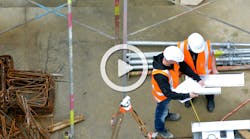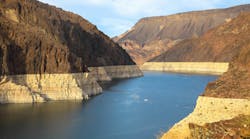Looking Behind the Scenes
Every so often, an event occurs that focuses national attention on people who are usually not in the public eye; something extraordinary compels us to recognize them and appreciate the job they’ve been doing all along. We always knew someone must be performing that function, but very likely many of us never gave it a second thought.
The New York City firefighters on 9/11 were one such group, as are the first-responders in almost any emergency situation. Stormwater management, too, has its dramatic moments and its workers who, for the most part, perform their jobs behind the scenes. For many of them in the Southeastern US, Hurricane Katrina was the event that put them to the test and in the spotlight.
We’re glad to be able to report in this issue on the work that took place immediately after the 2005 hurricanes; much of it is still ongoing. David Richardson’s article on page 46 follows the efforts of one group, employees of the Sewerage and Water Board of New Orleans–the agency responsible for the many pumping stations, some of them decades old, that New Orleans depends on for its below-sea-level existence. In the first hours after the storm hit, workers inside the manned pumping stations still had no idea the levees had failed, and, with minimal communication with the outside world, they wondered why the water level continued to rise. The article details what happened to them during the storm–some swimming to safety and pulling coworkers behind them–as well as their work in the months since to restore operations and restore some sense of normalcy to the city.
The reverberations of Katrina went far beyond the Southeast. Help arrived from many directions, but one of the most compelling offers came from employees of the Portland Water Bureau, more than 2,000 miles away in the Pacific Northwest, a part of the country almost never touched by hurricanes. Arriving with a caravan of much-needed vehicles and hauling in their own tents and supplies, Portland Water Bureau employees camped out in 30-day shifts, offering New Orleans assistance not only with relief equipment and immediate repairs to the waterlogged pumps, but also with guidance in preparing the complex and extensive paperwork required to receive federal aid from FEMA–something the Portland contingent had learned while dealing with other types of natural disasters.
Efforts by others to test water quality and assess the effects of the city’s unprecedented flooding are examined in the article by Carol Brzozowski on page 16–the US Army Corps of Engineers, the USEPA, the Louisiana Department of Environmental Quality, and several private companies. The tasks are familiar; they’re similar to those your own program has carried out at one time or another after a flood: painstakingly testing the waters and compiling the data, cleaning out catch basins and drainage pipes, locating outfalls, prioritizing repairs. Most likely, though–if you were lucky–you were doing them on a smaller scale, and you didn’t have national attention focused on you while you were performing them.
Despite all the analysis and the debates over what should have or could have been done in the immediate wake of the hurricanes, so many of the people who dealt with the crisis did exactly what they had been prepared for all along. As one employee remarks, the people who had work to do didn’t panic: “They just went about the business of how we had to deal with the water.”

